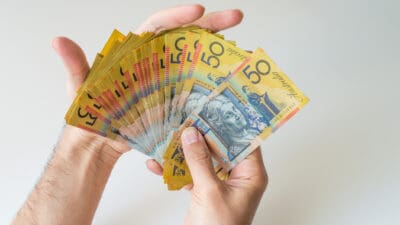The ASX has dozens and dozens of exchange-traded funds (ETFs) available on its boards these days. Since the popularity of ETFs has been steadily rising among ASX investors for the past few decades, so too has the range and scope of these funds.
But even though Australian investors can now access ETFs that cover the most specific niches you can think of (oil futures, platinum bullion, etc), the traditional index ETFs that first helped the ETF structure get off the ground are still the most popular.
According to data from CommSec, the ASX ETF with the highest level of funds under management (FUM) is the Vanguard Australian Shares Index ETF (ASX: VAS).
VAS now has more than $9 billion in FUM, making it the most popular ASX ETF for Aussie investors. But Vanguard's second most popular ETF (and the sixth most popular ETF overall) is another beloved fund, the Vanguard MSCI Index International Shares ETF (ASX: VGS).
2 of the ASX's most popular ETFs
Both of these ETFs are index funds that track different indexes. VAS mirrors the S&P/ASX 300 Index (ASX: XKO), which holds the 300 largest ASX companies within it, weighted to market capitalisation.
You'll find everything from the big ASX banks, Telstra Corporation Ltd (ASX: TLS) and BHP Group Ltd (ASX: BHP) to Woolworths Group Ltd (ASX: WOW), Harvey Norman Holdings Limited (ASX: HVN), and Afterpay Ltd (ASX: APT) here.
VGS, on the other hand, tracks the MSCI World ex-Australia Index. This index tracks a wide slice of the world's largest companies that are domiciled in major advanced economies, also weighted to market cap. In practice, this ETF is heavily skewed to US shares, which command 69.9% of VGS's entire portfolio. Other major contributors include Japan, the United Kingdom, Canada, France, and other European countries.
As such, its largest holdings are dominated by the US tech giants, including Apple Inc (NASDAQ: AAPL), Amazon.com Inc (NASDAQ: AMZN), and Microsoft Corporation (NASDAQ: MSFT). As well as Tesla Inc (NASDAQ: TSLA), Meta Platforms Inc (NASDAQ: FB) and Alphabet Inc (NASDAQ: GOOG)(NASDAQ: GOOGL).
Some other notable holdings include Johnson & Johnson (NYSE: JNJ), Warren Buffett's Berkshire Hathaway Inc (NYSE: BRK.A)(BRK.B), and Nestle SA.
So these two ETFs are among the ASX's most popular index funds, covering two indexes that reflect a broad representation of most of the companies we could ever think of.
But how do they stack up?
VAS vs VGS: Which ASX ETF wins?
Well, in terms of diversification, VGS is the undisputed winner. VAS may cover all 300 shares in the ASX 300 Index. But VGS holds more than 1,500 individual companies across more than 20 countries. That's a lot more diverse than the ASX-only VAS.
Turning to management fees, and the tables are turned. VGS does charge a competitive fee of 0.18% per annum (or $18 a year for every $10,000 invested). But VAS takes the cake here with an annual management fee of 0.1% (or $10 a year for every $10,000 invested).
But let's check out the real McCoy, as it were: performance. After all, an ETF is arguably only as good as the returns it can get its investors.
So VAS has averaged a return of 28.66% over the past year (as of 31 October 2021). That is net of fees and assumes all dividend distributions are reinvested. But it doesn't reflect the value of franking credits. Over the past 3 years, VAS has averaged a return of 12.26% per annum. Over 5, it's 10.99% per annum, and 9.91% per annum over the past 10.
How does VGS stack up? VGS has given its investors a return of 31.4% over the past year. Over the past 3 years, it has averaged 16.05% per annum, and 15.96% over the past 5. This ASX ETF hasn't been around for 10 years on the ASX. But it has managed a 13.84% average annual return since its inception in November 2014.
Everybody wins?
So it seems VGS is the clear winner in terms of performance. But a caveat: US shares have been on an extremely strong bull run over the past decade or so, notwithstanding the market gyrations that last year brought us. There's nothing that suggests this outperformance will continue over the next 10 years – or that it won't, for that matter.
What really matters is that both of these ASX index funds have consistently compounded their investors' money at a very healthy rate. Either ETF would have been a far superior choice than investing in gold, leaving your money in the bank in a savings account or term deposit, or investing in bonds.
So perhaps it's no surprise that these 2 ASX ETFs – VAS and VGS – remain so popular with Australian investors.









